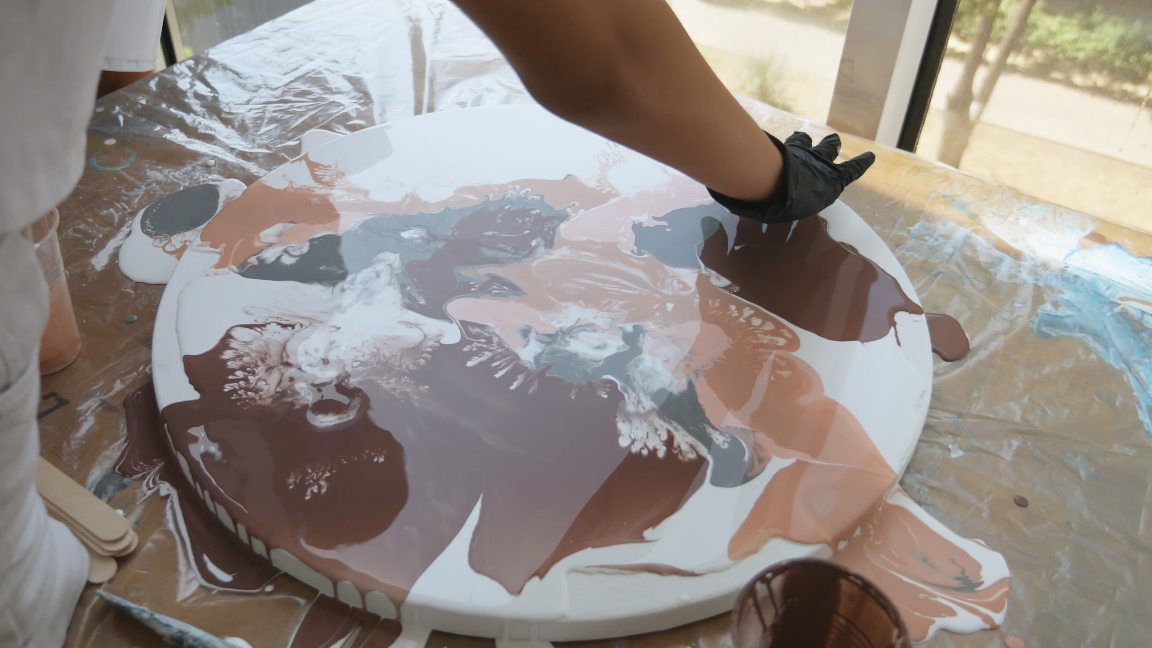Why Did My Epoxy Resin Mixture Overheat?
Hot resin can be alarming; yet, it’s perfectly normal!
Combining the resin and hardener creates an exothermic reaction. This means that when the two liquids are mixed together, they begin producing heat that allows the mixture to solidify and cure.
However, sometimes resin can overheat during this process, and the reactions can be unpredictable.
In this guide, we’ll break down:
- 6 Ways to Know if Your Resin is Too Hot
- Why Did Your Resin Overheat?
- How Can You Prevent Your Resin From Overheating?
- Practice Makes Perfect
- Why Buy From Us?
6 Ways to Know if Your Resin is Too Hot
There are several ways to tell if your resin is overheating. However, it’s essential to understand what that looks like throughout every step of the process, so you don’t have to discard your hard work.
The 6 signs of resin that is overly hot include:
- The resin fills with bubbles or foam.
- Heat from the resin melts your mixing cup.
- The resin mixture has a shorter pot time than expected.
- After pouring, you notice excessive shrinkage of your resin casting.
- Once cured, the resin mixture cracks.
- The resin begins smoking.

Why Did Your Resin Overheat?
Truthfully, there are countless reasons why your resin could overheat. The chemical reaction between the resin, hardener and other additives can be unpredictable at times. In saying that, there are a few common causes and things to avoid when working with epoxy. The most frequent issues we see when creating with resin include:
-
You’re Mixing Too Much at Once
In your resin kit, you’ll find an instruction booklet that specifies minimum and maximum mixing amounts. Unfortunately, when too much resin and hardener are combined, heat is produced rapidly.
-
Too Much Heat Was Applied
Using a torch or a heat gun is extremely helpful to remove resin bubbles. However, if too much heat is applied, it’ll quickly add to the resin reaction.
-
Something Was Added to Your Resin
Experimenting with different colours to add to your resin can be fun. However, the mixture can react in unexpected ways and begin heating up far too quickly. In particular, solvent-based colours and other paints are known to sometimes cause a reaction.
-
Layers Don’t Have Enough Time to Cool
Before pouring the next layer, let the previous layer cool to room temperature. Heat rises, so if the last layer is still hot, the upper layer may overheat.
-
Your Layers Are Too Thick
Every resin kit should outline the maximum safe pour depth. For example, our Tabletop and Art Resin have a recommended depth of up to ¼” deep. Exceeding the safe pour depth will quickly create a reaction that produces excessive heat.

How Can You Prevent Your Resin From Overheating?
Although working with resin can be tricky, following a few best practices can help prevent your resin from overheating most of the time.
-
Don’t Mix Any More Than the Maximum Amount Advised by the Manufacturer.
You can find these details in the instruction pamphlet in your New Classic Resin Kit. Note: if you need to use more resin than the recommended mixing amount, try mixing and pouring in smaller batches.
-
After You've Completed Stirring, Pour Your Resin and Hardener Mixture as Quickly as Possible.
Before even measuring and mixing your resin, make sure to prep your workspace and have everything ready. If left in the container for too long, the resin & hardener will continue to heat up.
-
Keep Your Work Environment at a Cool Temperature.
Working at temperatures between 23°C and 29°C (73.4°F and 84.2°F) in a clean space will produce the best results. If you need to cool down your workspace further partway through creation, just try opening a door or turning on a fan.
-
Try Absorbing the Resin’s Heat.
Metal surfaces can function as heat sinks, absorbing part of the heat generated by the resin mixing process. Alternatively, something as simple as a metal trivet/stand can help hold the project while also absorbing some heat.
-
Keep Your Pours Thin and Shallow.
If you’re working with a high-volume area, it’s highly recommended to do your pours in batches. By pouring thinner layers, it allows the heat to transfer off faster. Alternatively, New Classic’s Thick Pour Resin allows artists to pour up to 2” deep.

Practice Makes Perfect
The best way to avoid hot resin is just to continue practicing! Learning how to work with epoxy and perfecting your measurements, mixing, and pouring all takes time and focus. If the overly hot resin is a recurring issue for you, try working on a smaller scale. Regularly doing small batches and project test runs will help you get a feel for what works and what doesn’t.
If you’ve followed all of the suggestions in our guide and you’re still struggling with overheating issues, then don’t hesitate to contact us. We’re always here to help and provide guidance.
Why Buy From Us?
- We negotiate with suppliers, so our prices are unbeatable
- Artist-grade Epoxy Resin for passionate creators
- Speedy shipping available throughout Canada and USA
- Choose from 150+ premium products in our collection
- Our products have been used by thousands of happy customers
- We offer flexible exchanges, refunds, and repairs
- Excellent customer support is what we pride ourselves on
- We are proudly Canadian owned & operated
